Shrines and Temples in and Near Tokyo
During my first month in Japan I set aside time to visit a range of spiritual spots, shrines and temples to experience the historical religious elements that the country has to offer. Each shrine has its own unique story, background and tranquil architecture, something that couldn’t be experienced anywhere else.
Here are some of the major shrines in and near Tokyo.

Sasuke Inari Shrine
Founded during the late 12th century by Minamoto no Yoritomo, Sasuke Inari Shrine is my favorite shrine and is popular among students and job-seekers as it is believed to bring blessings for business success, career advancement, academic achievement, good fortune and success in relationships. It is located in Kamakura, Kanagawa Prefecture, about an hour and a half from central Tokyo and 30 minutes from Kamakura Station.
It is said that while in exile, Yoritomo had a dream where he met an Inari deity, a fox spirit, who told him to rise against the Taira clan. Yoritomo then commissioned this shrine to be reconstructed in the same location he envisioned the spirit.
In July I trekked through what seemed like endless torii gates along a forested path, miniature kitsune (fox) statues scattered throughout the edge of the steps caught the corner of my eye.
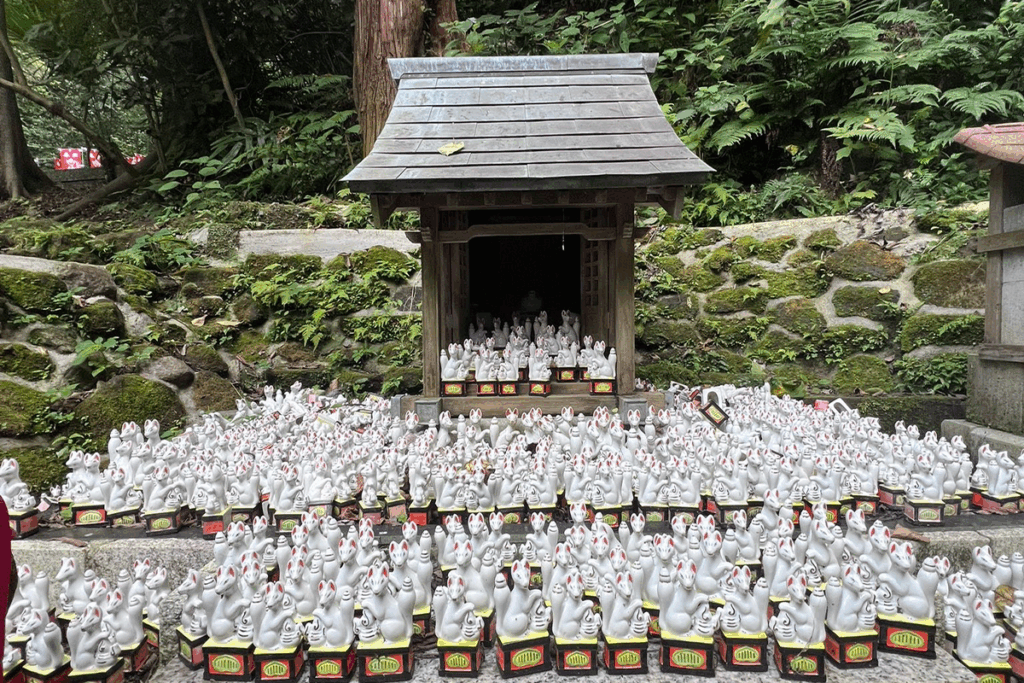
The number of mini statues gradually increased until I reached the shrine. I was met with thousands of kitsune in their own small sanctums which occupied the shrubbery and steps attached to the main shrine. Some kitsune held scrolls or jewels, each serving as symbolic guardians of the Inari, which represents wisdom, wealth and fertility.
I was amazed by the number of kitsune that guarded the location. It was an eerie yet remarkable experience; awestruck, I wanted to stay for hours. This shrine is open every day and charms are sold during certain hours throughout the day.
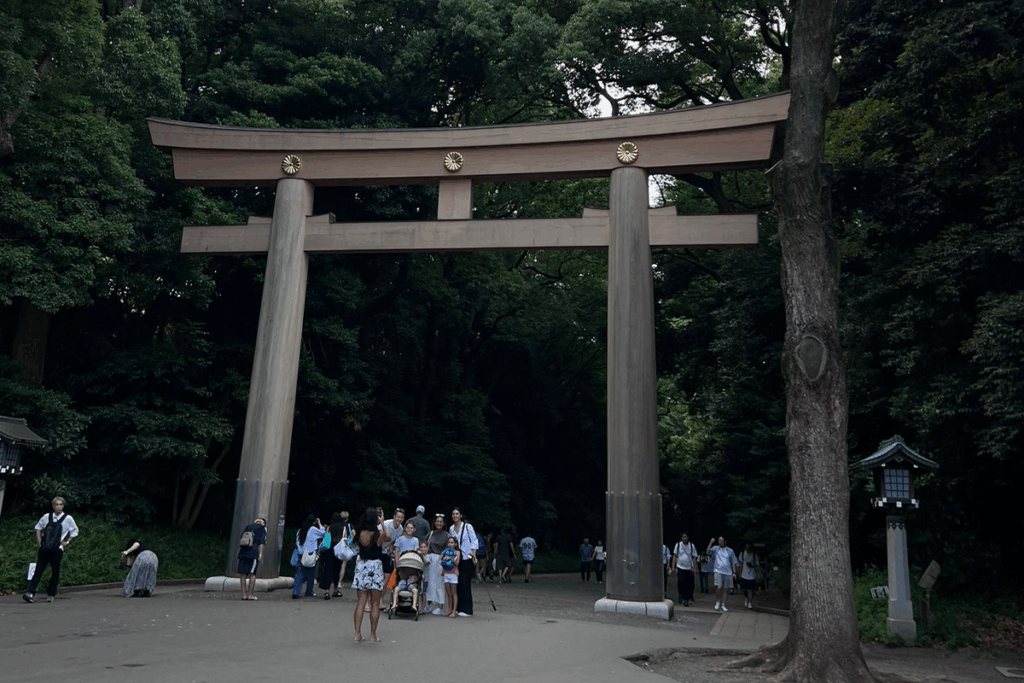
Meiji Jingu Shrine
Located in Shibuya Ward, Tokyo, a few steps from Harajuku Station, the Meiji Jingu Shrine was built to honor the deified spirits of Emperor Meiji and Empress Shōken after their passing. Totaling about 170 acres with over 120,000 different tree species, this shrine was one of the largest I have been to. It was built in the traditional Nagare-zukuri style with Japanese cypress and copper.
Built in 1975 from a 1,500-year-old cypress tree, Meiji Jingu has one of the largest myōjin torii in Japan. Walking through the gate, the pathway was gigantic and completely forested, making it a pleasant nature walk and easily accessible for many people to visit at once.
Some of the notable sites were the Meoto Kusu, the married couple’s camphor trees symbolizing marriage and family ties; the sake and wine barrels; and the Kaguraden, a pavilion or stage inside a Shinto shrine.
Once I made it to the inner garden, Yoyogi Gyoen, I saw the traditional iris ponds, tea house and Kiyomasa’s well. Visitors should check out the Meiji Memorial Picture Gallery, a large-scale range of paintings depicting scenes from Emperor Meiji’s life.
I was impressed by the shrine’s size and how much there was to look at in the surrounding area. It felt never-ending, but it became one of my favorite shrines. The best part is the large variety of charms they have to offer.
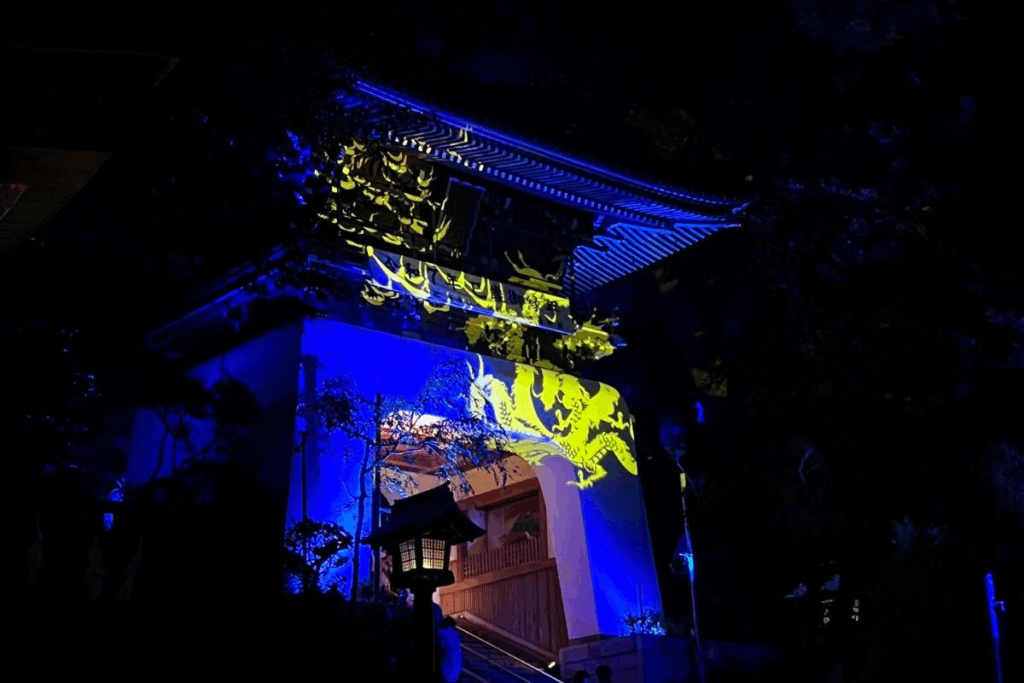
Enoshima Shrine
About two hours from Tokyo if you take the Enoshima Line, you will see the bronze torii gate near the bridge entrance to winding lantern-lit paths and endless stairways leading through vendors and ceremonial spaces. That is where I saw Enoshima Shrine’s complex and the intricate architecture that left me in awe.
Enoshima Shrine was founded in 552 AD and was built based on the mythology that the goddess Benzaiten caused Enoshima Island to rise up from the sea to protect local villagers from a dragon. This shrine honors the three sister sea goddesses: Tagitsuhime-no-Mikoto, Tagirihime-no-Mikoto and Ichikishimahime-no-Mikoto, each enshrined in a main pavilion: Hetsunomiya, Nakatsunomiya and Okutsunomiya.
The shrine complex features the iconic Zuishin-mon Gate, built in the style of Ryūgū-jō (Dragon Palace) and it symbolizes spiritual cleansing. Inside the Hoanden (Octagonal Hall of Statues), visitors can see two revered Benzaiten statues: Happi-Benzaiten, the eight-armed benefactor and Moon-Benzaiten, a nude statue playing a biwa.
The site offers blessings across areas such as wealth, business success, artistic skills, beauty, matchmaking and travel safety.
By the time I made it to the very last step, I was met with views of the Pacific Ocean and a cave dedicated to couples. I was exhausted by the end of it, but the views of Mt. Fuji made up for it.
Zojoji Temple
Located in the Shiba Park area of Minato Ward, Tokyo, close to Onarimon Station is Zōjō‑ji temple traces back to a temple called Kōmyō‑ji, founded in the 9th century by Shūei, but was later reestablished under abbot Yūyo Shōsō, who became a Jōdo‑shū (Pure Land Buddhist) monastery. The Sangedatsumon gate is the oldest wooden structure in Tokyo and symbolizes liberation from greed and anger.
I was struck by the various structures such as the Daiden, Ankokuden Hall, home to the Black Amida statue, the Daibonshō and the Kyozō.
At the temple, I was immersed in the beautiful architecture while being close to the sights of modern-day Tokyo. Not only is the temple massive, with plenty of space for people to walk and adore, but I had a perfect view of the main structure with Tokyo Tower in the background.
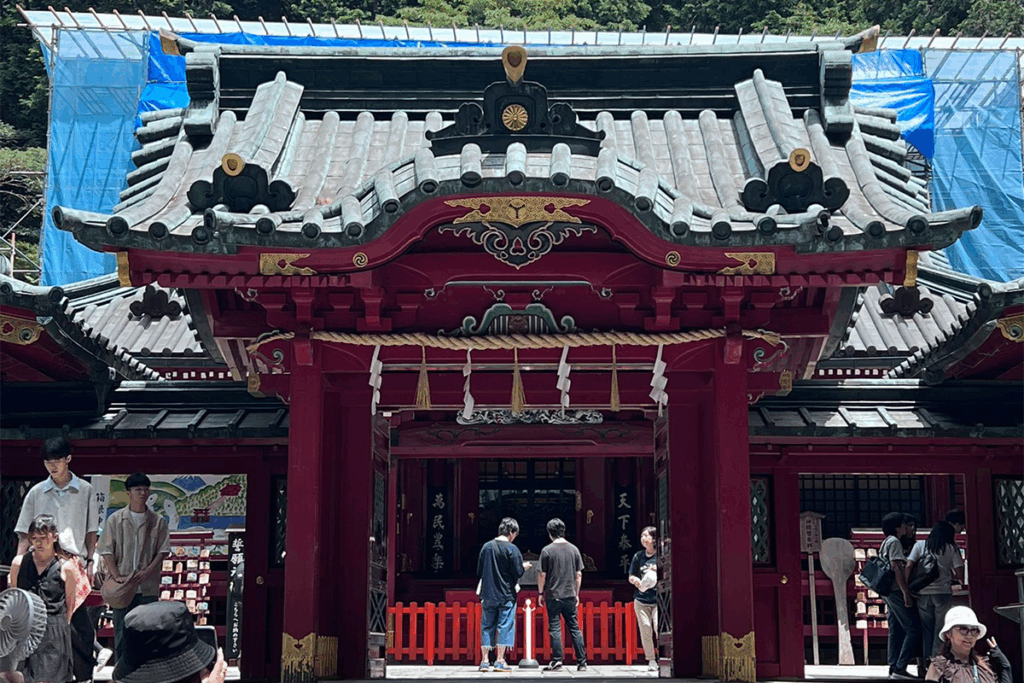
Hakone Shrine
About an hour’s bus ride from Hakone Station, Hakone Shrine lies on the shores of Lake Ashi and was founded in 757 CE (Nara period) by Priest Mangan, who is said to have killed a nine-headed dragon dwelling in Lake Ashinoko. He then enshrined it as the protective deity Kuzuryu Myōjin, which marked the spiritual foundation for the shrine. Minamoto no Yoritomo was a major patron of the shrine during his time.
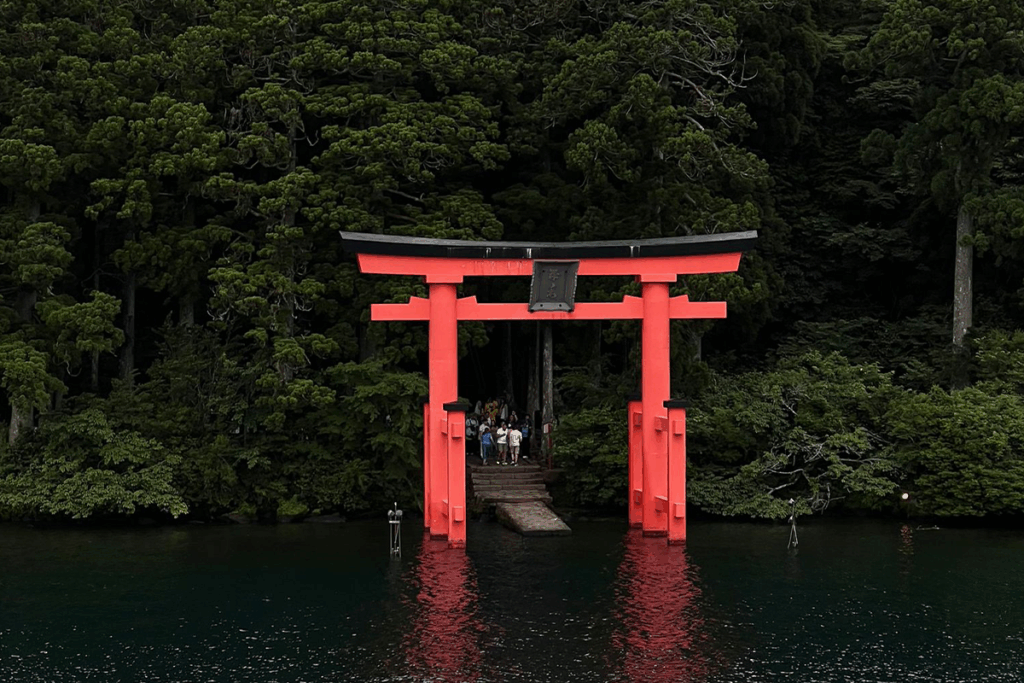
I admired the architecture and shrine’s vibrant colors as well as the several smaller structures around the main area. At the base of the shrine is the Torii of Peace. Situated in the middle of countless cedar trees created a tranquil and perfect ambiance. I immediately understood why others say this place offers protection, prosperity and pilgrimage traditions.
To learn more about Japan’s shrines and temples, here is GoConnect’s brief guide.

